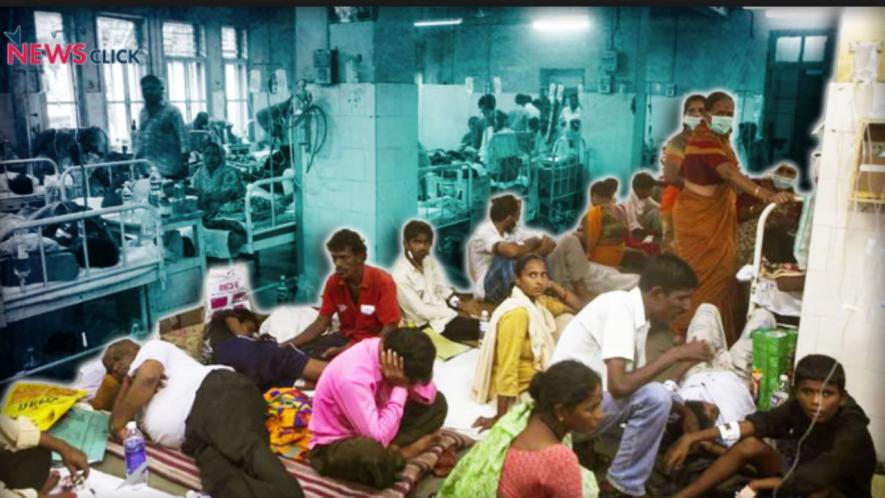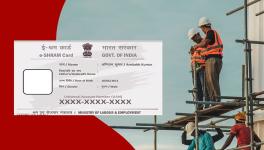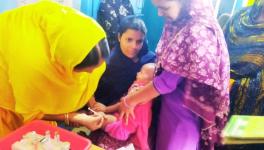Budget 2025-26: Most Announcements on Health Are an Eyewash

One of the highlights of Union Budget 2025-26 was the announcement by Finance Minister Nirmala Sitharaman to exempt a list of lifesaving drugs from Basic Customs Duty (BCD). Apparently to “provide relief to patients” suffering from cancer, rare diseases and other severe chronic diseases.
However, this is nothing but an eyewash!
Let us take the example of Risdiplam, a drug to treat the rare disease, Spinal Muscular Atrophy. The price of Risdiplam is about Rs 6 lakh for a month or about Rs 72 lakh annually. Even if a BCD of 15% is removed, the price comes to about Rs 61 lakh annually. Risdiplam is produced by Swiss pharma major, Roche, which has a patent on the drug until 2035.
Had the government been a bit serious in providing relief to patients, it would have thought of allowing for generic manufacture of Risdiplam in the country and providing compulsory license for the production of such patented drugs. A case is already pending in the High Court of Kerala where evidence has been provided that the estimated cost-based price of the generic version of Risdiplam can be as low as Rs 3,024.
K M Gopakumar, legal advisor and senior researcher with Third World Network (TWN), notes that “The elimination of import duty elimination would not translate into enhanced access to medicines at an affordable price because these medicines are exorbitantly priced. Further, there is no evidence that benefit import duty elimination is passed on to patients.”
Similarly, the price of one 1,000 mg vial of Obinutuzumab, a patented drug for Chronic Lymphocytic Leukemia, is about Rs 4 lakh. The treatment cycles require about eight doses, the price of which comes to about Rs 32 lakh. After 15% BCD reduction, its price would be about Rs 27 lakh.
The announcement of Day Care Cancer Centres in all district hospitals is a welcome step. One only hopes that this comes into effect and not meets the fate of the health and wellness centres, where the announcement only meant a change in name and signboards with no real enhancement in services.
Allocations for Women and Child Development
The eyewash is not limited to the affordable availability of drugs to people.
The Finance Minister announced enhancement of cost norms for the nutritional support under the Saksham Anganwadi and POSHAN 2.0 programme. However, if we look at the allocations, there is a 2.7% decline under this programme over the last year’s Budget allocation in real terms, that is, accounting for inflation. For the Ministry of Women and Child Development, there is a decline of about 3% in real terms over the last year’s Budget allocation.
Continued Emphasis on PMJAY and Starving of NHM
As in the previous years, the Union government continues to emphasise an insurance-based model while starving crucial programmes, such as the National Health Mission (NHM). While there is a 29% jump in the allocations to PMJAY (Pradhan Mantri Jan Arogya Yojana), there is a meagre 6% increase in the nominal allocations to NHM.
The NHM, which works to strengthen the health system and pays attention to the preventive and primary health needs of the population includes crucial interventions at the primary level such as Flexible Pool for RCH (reproductive child health) & Health System Strengthening, National Health Programme and National Urban Health Mission, National Digital Health Mission, AYUSH Mission and also Pradhan Mantri Ayushman Bharat Health Infrastructure Mission (PMABHIM) – NHM component. If we look at the allocations for NHM in real terms, there is only 0.4% increase over the last year’s Budget.
It was also announced that gig workers would now be provided healthcare under PMJAY. But the evidence already suggests that schemes such as PMJAY, with over emphasis on tertiary care and in-patient care, are not appropriate or capable to cater to the health needs of the poor and marginalised.
Investment in Health: Disappointing
On the whole, the Budget, despite promises, shows that the government continues to neglect the public health system, which needs greater public investment.
Figure 2: Union government expenditure and allocations on Health as % of GDP
The Union government’s health expenditure as a proportion of the total income of the country (or GDP) continues to remain a meagre 0.29%. The priority to health in the total Budget continues to remain low at about 2%. Accounting for inflation, the allocations for health in Union Budget 2025-26 have increased only by a meagre 3% over the previous year’s Budget allocation.
In sum, the government has learnt no lessons from the COVID-19 crisis that a strong public health system is the need of the hour. Are we waiting for another such crisis to jolt us?
The writer is a researcher who writes on public health and economic issues. The views are personal.
Get the latest reports & analysis with people's perspective on Protests, movements & deep analytical videos, discussions of the current affairs in your Telegram app. Subscribe to NewsClick's Telegram channel & get Real-Time updates on stories, as they get published on our website.
























